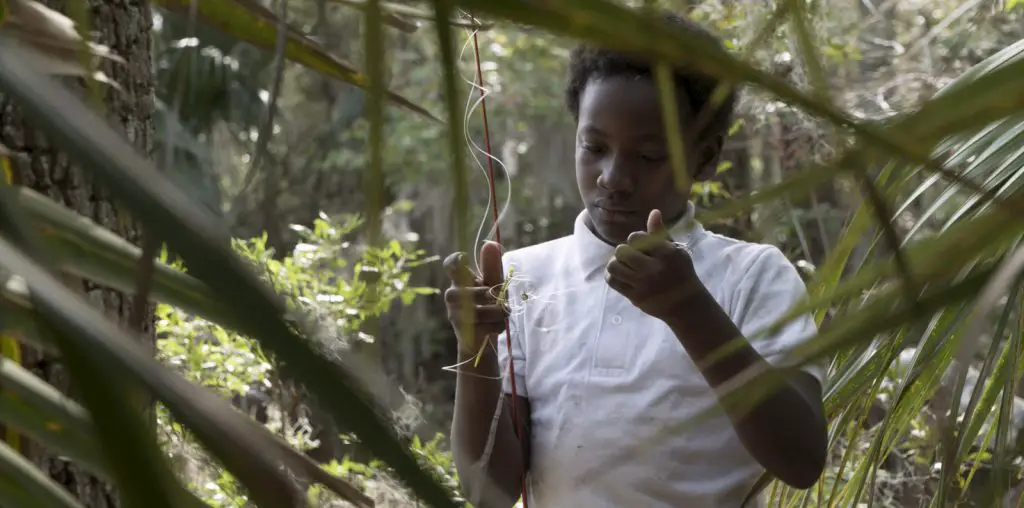
You’ve got your movies that are “based on a true story,” and then you’ve got movies like “Ramchand Pakistani” – which screened at the 33rd annual Cleveland International Film Festival – that cut out the “based on” part and tell us from the get-go that what we are seeing is a true story, more or less as it actually took place. In this case, we are witnessing events that happened between 2002 and 2007 on the India-Pakistan border.
Ramchand is an eight-year-old boy of the “untouchable” caste, or the lowest of the low, living in a dirt hut in the village of Bhimra, Pakistan. He lives with his mother, Champa, and his father, Shankar, who seem to care about each other and about Ramchand, despite their poverty. This particular slumdog, however, is not destined for riches. For his part, rambunctious Ramchand is a bit of a Pakistani Antoine Doinel, skipping school in favor of running around town to get himself into all sorts of mischief. Meanwhile, the adults of Bhimra are working hard labor, but find joy in their lives by singing and dancing. Their dignity is not diminished by their poverty; the men keep their appearance neat, and the women wear elegant and brightly colored clothing, even while doing chores in their windowless dirt huts.
There is a continually variable border between India and Pakistan, marked only by small white rocks, placed a few dozen yards apart from each other. One does not cross this bare bones barrier. When Ramchand wanders just a few yards into India, he is seized by the Army. When Shankar goes looking for him, he is abducted as well. Father and son are tossed into an Indian prison. Their explanations and pleas for mercy fall on deaf ears; they are spies as far as the Indians are concerned. Thus, father and son spend at least five years behind bars for having done nothing other than to wander a few yards into India. The eight-year-old Ramchand is the only child in the prison, and so Shankar must protect his son from all manner of bad influences, from pervs to smokers, to paper-eating crazies. Sometimes Shankar’s defense of whatever innocence Ramchand has left results in fisticuffs; this often puts Shankar in the poor graces of the guards.
Ramchand finds a beetle in the dirt; he keeps it in a matchbox in his short pocket, pulling it out to play with from time to time. Just as the Indians are keeping the “untouchable” Pakistanis (whom the Indians view as little more than animals) captive, Ramchard is also keeping an insect in a cage against its will. In a fit of rage, Ramchard smashes the bug; will it be long before India smashes Pakistan? Does the insect hold any hope of striking back? Does Ramchard?
As Ramchard and a dozen men rot in their overcowded group cell, Champa is back home in the village with no idea where her husband and son are. She has not been able to find any information about her family at all. After spending the next few years working off Shankar’s debts, she eventually accepts that her husband and son are gone for good. A middle-class Muslim street merchant has eyes for Champa, and he seems like a good man. But due to both class and religious factors, they cannot be together. At the same time, 13-year-old Ramchand, now a somewhat hardened young adult, falls for the policewoman charged with schooling him. She is just as unobtainable to Ramchand as the merchant is to Champa. In the end, there is some hope of reuniting the family, but the story is not yet over.
Ramchand is played by two different actors (Syed Fazal Hussain and Navaid Jabbar), and the switch between them is seamless. The boys look enough alike that the aging is most convincing. As Champa, the lovely Nandita Das doesn’t have much to do other than to be worred as she goes about her household chores; perhaps a few of her scenes could have been cut, in fact. However, she conveys the depth of her concern with her body language, as if her problems are becoming heavier by the day.
The movie gives the viewer a wonderful sense of place. Day to day life in the province of Dalit is captured vividly and unflinchingly. The dirt floors, barely adequate food, persistent flies, and the contrasting wardrobes – straight out of Bollywood – set the scene for the sense of community that the Bhimrani share. The boredom of the prisoners is captured as well, and if the movie drags a bit here and there, who is to say that isn’t in solidarity with the lives of the inmates? The story was shot on video, but only screams of such during a few scenes of intense motion. Otherwise, the bright colors and bleak dust make for a nice contrast and a few visually arresting images.
“Ramchand Pakistani” is the sort of film that will leave a viewer slightly angry, and with a renewed awareness of man’s continual injustice towards his fellows. This family gets a raw deal, and all because of the endless international squabbling over politics, caste, and religion, none of which were squabbles that the protagonists participated in personally. As pawns stuck in a game much larger than themselves, their lives have been irreparably damaged over nothing but a little boy’s running too far into a completely barren and empty landscape.

Ramchandra pakistani is hear touching movie .With the help of this movie more interested to know about pakistan and feel more humanity and also know the somethingh about pakistani hindu. I am more happy after a long time we watching pakistan directed movie in india. Thanx